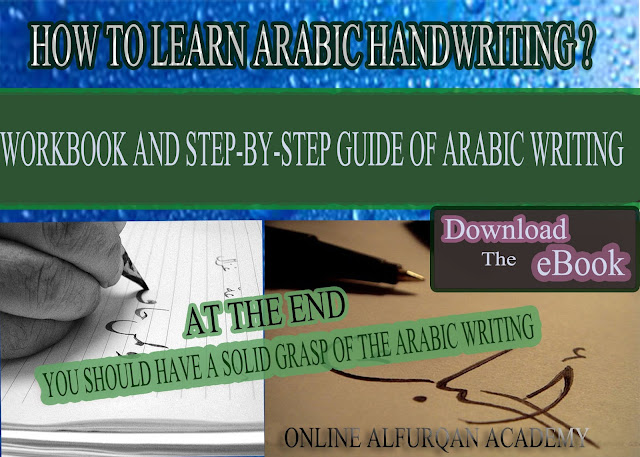Introduction of Arabic Writing
Arabic is
spoken by more than 250 million people in over 22 countries. It
is the official language of all Arab countries, hence forming a cultural bond
among them. Arabic belongs to the Semitic group of languages which includes Hebrew,
Aramaic, Ethiopic and others.
The Arabic
alphabet consists of 28 letters. The letters are written from right to
left. When you write in Arabic, you join the letters together to form words.
The shape of most letters changes according to their position in a word. There
are, however, six letters that never change shape.
The modern
standard Arabic is the written and official language of the Arab world
today. The colloquial form is the commonly spoken Arabic, which differs greatly
from one country to another. Written Arabic, however, remains the
same throughout the Arab world. The Arabic alphabet has also been adopted, with
some modifications, by non-Semitic languages, including Persian,
Urdu, Malay, and Pashto.
How to Learn Arabic Handwriting
Would you
like to read and write Arabic but worry that it all looks like scribbles? This
workbook will help you unveil the mysteries of the Arabic script
and will guide you through the basic steps of learning to write the language.
This book
will teach you how to join letters to form words, introduce you
to new vocabulary, and guide you through pronunciation. This workbook also
includes plenty of examples and exercises to help you write and read the Arabic
language.
The workbook
offers a hands-on approach to learning Arabic. Away from lengthy introductions
and linguistic complications, this book will lead you directly into unravelling
the mystery of the Arabic script and learning how to read and write it.
In this
book, you will be introduced to the Arabic alphabet in sequence. You
will practice writing the shape of each letter and you will learn how to join
the letters to form words. This book will also guide you in the pronunciation
of the different letters of the alphabet. You should become familiar
with the shape and sound of each letter before moving on to the next one.
This
workbook will introduce you to the modern standard Arabic, which
is the written language of the Arab world today. it is widely understood in all
Arab countries, and shares several similarities with classical Arabic. The
purpose of this book is to provide you with the basic skills for reading,
writing, and understanding Arabic as it appears in newspapers, current
literature, and educational materials.
In this
book, we will refer to them as "disjoined letters." These
letters do not join the letters following them and their shape does not change
according to their position in a word. Joined letters, on the
other hand, join the letters on their left and right. Most joined letters have
more than one form. The short form of the letter is used at the beginning of a
word or when it falls between two other joined letters. The long form is used
when the letter falls at the end of a word or when it stands alone.
Try your
best not to lift your pen when writing. Start with the basic shape of the
letter, and then place any additional dots or strokes. Remember, any additional
marks are placed from right to left. Pay attention to the writing line, and
note which parts of the letter belong above or beneath the line. Do not confuse
the name of the letter with its pronunciation. In Arabic, the name of the
letter does not necessarily correspond to the sound it produces.
By the end
of the workbook, you should have a strong grasp of the Arabic alphabet
and knowledge of its shape and sound. This will assist you greatly in further Arabic
studies.
After Finishing the Book
By now, you
should have a solid grasp of the Arabic script and feel confident
enough to read and write basic words. You can now begin
developing your vocabulary and learning basic grammatical structures.
Remember, practice makes perfect, so continue by copying examples of Arabic
writing you see in magazines, newspapers, books, etc.
Good
luck!










learn arabic handwriting
ReplyDeleteArabic Handwriting is a part of the Learn Arabic Series of Safar Publication. The main purpose of this book is to develop the children’s familiarity with elementary Arabic penmanship by teaching them to write letters and words. With the help of this book, students can learn to write and study verses of the Holy Qur’an and hadith of the Prophet Hazrat Muhammad (SM). Moreover, students can also use this book as an aid to the Safar Qa’idah, and this will them learn and read the Qa’idah fluently.
madina script quran
https://madinahmedia.com/
Master Quranic Arabic and learn to read Quran online with Alfurqan Academy. Interactive one-on-one classes for beginners, kids, and adults with certified teachers and flexible schedules.
ReplyDelete